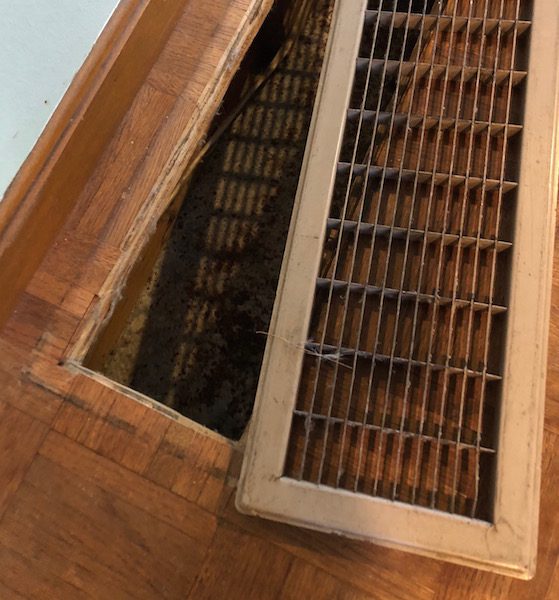Effective Ventilation Will Reduce Dirty Air Coming from a Crawlspace

You probably (hopefully!) don’t spend an inordinate amount of time thinking about the crawlspace under your house. But it could pay ample dividends to spend at least a bit of time considering whether your crawlspace is contributing to air quality issues in your home.
What Is a Crawlspace and Why Should You Care?
Good question. If your home has a regular basement, finished or otherwise, it probably doesn’t have a crawlspace. (If your house has a basement instead of a crawlspace, you won’t hurt our feelings if you move on to the next blog.) In homes without a standard basement, the crawlspace is the enclosed space between the ground and the first floor of the house, generally enclosed by foundation blocks. An assortment of ducts, pipes and other utility lines and conduits often run through the crawlspace (along with various unsavory insects and beasties).
A crawlspace usually doesn’t get any conditioned air. Rather, this is the place where dirty and/or humid air collects and may waft up into your home’s living spaces. In some cases, mold growth in the crawlspace can threaten the health of occupants of the home. Insects and vermin also can sneak into your home from the crawlspace, though that’s a topic for a different forum.
Ventilation Can Address Crawlspace Hazards
The good news is that you can do something about the health and air quality issues associated with crawlspaces. The main weapon in your arsenal is effective ventilation. Following are three of the best ways to ventilate a crawlspace:
Vent the crawlspace area to the outside. This can be an effective strategy in areas with a dry climate such as the desert Southwest or Rocky Mountain West. This is particularly the case if ductwork runs through the crawlspace. However, in areas with a more humid climate (including Ohio and most of the Midwest, East and South), venting crawlspace air outside just allows for muggy air to flow into the crawlspace and eventually into your living spaces. Rather than solving air quality issues associated with the crawlspace, you’re exacerbating them. In many areas with humid climates, crawlspaces are sealed up to avoid that encroachment of moist outside air. When that’s done, if the homeowner is on the right track, another ventilation method can be employed. Such as…
Redirect some conditioned air from the forced-air HVAC system. If you have ducts routed through the crawlspace, this method is relatively straightforward (and is a common tactic for addressing air quality issues emanating from the crawlspace). If your central air conditioner has adequate capacity, it should be able to provide enough cool, dry air continuously to keep the crawlspace dry and mold-free during the cooling season and do so relatively inexpensively. On the other hand, if you have an oversized AC, it may not run in sufficiently continuous intervals to dry out the crawlspace area. A cooling system that’s too big for your home typically will short-cycle. When it kicks on, it quickly cools the home to the thermostat setting then turns off, repeating this cycle over and over in short intervals. This can waste energy since a disproportionate amount of electricity is consumed during start-up.
Exhaust Dirty Air to the Outside. Install a properly sized exhaust fan to transfer muggy, dirty air to the outside from the crawlspace. This method isn’t foolproof, however, since it can be tricky to control where replacement air originates. It might be just as dirty and humid as the air it’s replacing. This strategy usually isn’t as effective as employing the forced-air HVAC system to ventilate and dry out the crawlspace area.
Don’t Forget the Attic
Air quality challenges in your home’s attic have certain similarities to the issues that arise from an unventilated crawlspace. The main one is that in both cases, proper ventilation is the best way to address those issues. However, it’s important to recognize some important differences. For example, effective insulation is crucial in an attic, to reduce the build-up of heat energy and hot air on even a mild summer day. In a crawlspace, this isn’t an issue. Also, whereas humans and pets don’t spend time in a crawlspace, attics often are used as bedrooms, home offices and/or storage areas. So proper ventilation and air conditioning/heating is necessary, not just for air quality concerns but for basic comfort as well. Please see other blogs on this website for attic ventilation/insulation/conditioning tips.
